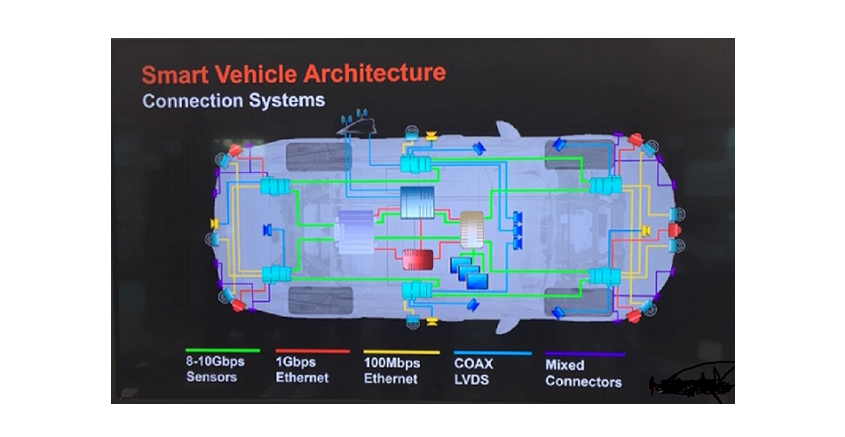Automotive makers and their suppliers are jacking up the processing power being introduced to cars along with higher speed wireless external connections. These high speed systems promise to collect, process, interpret and transmit sensor data for the purpose of enabling advanced collision avoidance and, ultimately, automated driving systems. Strategy Analytics is moderating the 2019 Automotive Smart Architecture Symposium in Bonn, Germany, this month to spotlight these issues with expert speakers from Aptiv, Micron, Valens, Visteon contributing their insights. At the heart of the vehicle architecture debate is the reality that the traffic jams we observe on highways throughout are analogous to the data traffic jams shaping up in increasingly connected vehicles. The connections and interfaces currently in use are demonstrably not up to the task of enabling the affordable mass market systems and solutions capable of transforming transportation.
Strategy Analytics is moderating the 2019 Automotive Smart Architecture Symposium in Bonn, Germany, this month to spotlight these issues with expert speakers from Aptiv, Micron, Valens, Visteon contributing their insights. At the heart of the vehicle architecture debate is the reality that the traffic jams we observe on highways throughout are analogous to the data traffic jams shaping up in increasingly connected vehicles. The connections and interfaces currently in use are demonstrably not up to the task of enabling the affordable mass market systems and solutions capable of transforming transportation.
To deliver the latest advanced solutions in real world production vehicles – as opposed to autonomous vehicle test mules – requires industry coordination to bring in-vehicle networks and interfaces literally up to speed. A big step forward occurred earlier this year when the MIPI Alliance (Mobile Industry Processor Interface) announced major enhancements to its MIPI A-PHY – a physical layer specification targeted at advanced driver-assistance systems (ADAS) and autonomous driving systems (ADS) and other surround sensor automotive applications.
While most MIPI specifications are designed for shorter reaches for use within mobile devices, A-PHY will be capable of reaching up to 15 meters in the demanding automotive environment. The new specifications provide greater resilience and capability for higher bandwidth and higher speed mission-critical use cases.
Valens has been a contributor to the new specification and will be able to provide further insight during the Automotive Smart Architecture Symposium set for the eve of the ELIV conference taking place in Bonn….
Valens has been a contributor to the new specification and is sponsoring the Automotive Smart Architecture Symposium set for the eve of the ELIV conference taking place in Bonn, Germany this month. The free event takes place October 15, from 15:30 p.m. at the Maritim Hotel Bonn on Godesberger Allee (Kurt-Georg-Kiesinger Allee 1) and will include expert presentations and dinner.
Participant presenters at the event will include Aptiv, Valens, Micron and Visteon. Strategy Analytics will be presenting at the event – sharing industry forecasts and insights – and moderating a panel discussion of the participating experts. The panel discussion will focus on the challenges and opportunities inherent in deploying high-speed in-vehicle connections.
Presentations will include:
- Emerging Vehicle Networks: What’s Driving the Race for Bandwidth?
- Automotive PCI Express: The Optimal High Speed Sensor Data Backbone of Tomorrow
- The Need for Multi-Gigabit Speeds for In-Vehicle Connectivity
- Memory Architecture in Autonomous Vehicles
- The Challenges and Opportunities for Automotive Architecture Evolution
Bringing increasingly sophisticated safety systems and autonomous driving technology to mass produced vehicles will require additional progress in advancing processing and data transmission speeds, but the A-PHY enhancements from MIPI (and Valens) marks an important step. The MIPI Alliances’ announcement of new interface standards will ultimately translate to saved lives, reduced vehicle emissions, and mitigated congestion as automobiles are able to operate on the road with greater intelligence easing in-vehicle data and external traffic jams.
Event registration is here: https://www.eventbrite.com/e/2019-automotive-smart-architecture-symposium-tickets-71641205775






Quantum Computing Technologies and Challenges